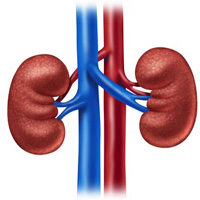 Smart Citations
Smart CitationsSee how this article has been cited at scite.ai
scite shows how a scientific paper has been cited by providing the context of the citation, a classification describing whether it supports, mentions, or contrasts the cited claim, and a label indicating in which section the citation was made.
Phyllanthus niruri and Chrysanthellum americanum in association with potassium and magnesium citrates are able to prevent symptomatic episode in patients affected by recurrent urinary stones: A prospective study
Objective: The aim of this study is to evaluate the efficacy of a food supplement containing Phyllanthus niruri and Chrysanthellum americanum in association with potassium and magnesium citrates in the treatment and prophylaxis of urinary stones.
Materials and methods: Eighty-two patients (mean age 49.7 ± 11.2) with history of urinary stones received this food supplement, one capsule a day for 6 months. Each administration contained a combination of the following ingredients: 244 mg Potassium citrate, 735 mg Magnesium citrate, Phyllanthus (Phyllantus niruri) herb d.e. 15% mg Tannins 220 mg, Chrysanthellum (Chrysanthellum americanum Vatke) plant d.e. ¼ 55 mg. After 6 months, all patients underwent urologic visit, urinalysis, imaging and quality of life (QoL) questionnaires evaluation. Each patient was also evaluated by computed tomography (CT) scan at baseline and at 6 months.
Result: From January 2018 to March 2019, 82 patients (mean age 49.7 ± 11.2) completed the follow-up period and were analyzed. Fifty patients showed lower stone dimensions (60.9%). The average stone size was 0.9 mm, with a significant reduction in comparison with the baseline (-6.7 mm ± 3 mm) (p < 0.001). Forty-nine patients (59.7%) did not show any symptomatic episode with an improving in QoL (+0.4 ± 0.1) (p < 0.001) in comparison with the baseline. At the end of the follow-up period, 27 patients out of 82 were stone-free (32.9%). Moreover, we report a significant reduction of patients with asymptomatic bacteriuria (ABU) between the baseline and the end of the follow-up evaluation (p < 0.001).
Conclusions: In conclusion, this food supplement is able to improve quality of life in patients with urinary stones, reducing symptomatic episodes and the prevalence of ABU.
Downloads
How to Cite
PAGEPress has chosen to apply the Creative Commons Attribution NonCommercial 4.0 International License (CC BY-NC 4.0) to all manuscripts to be published.

 https://doi.org/10.4081/aiua.2021.2.184
https://doi.org/10.4081/aiua.2021.2.184





